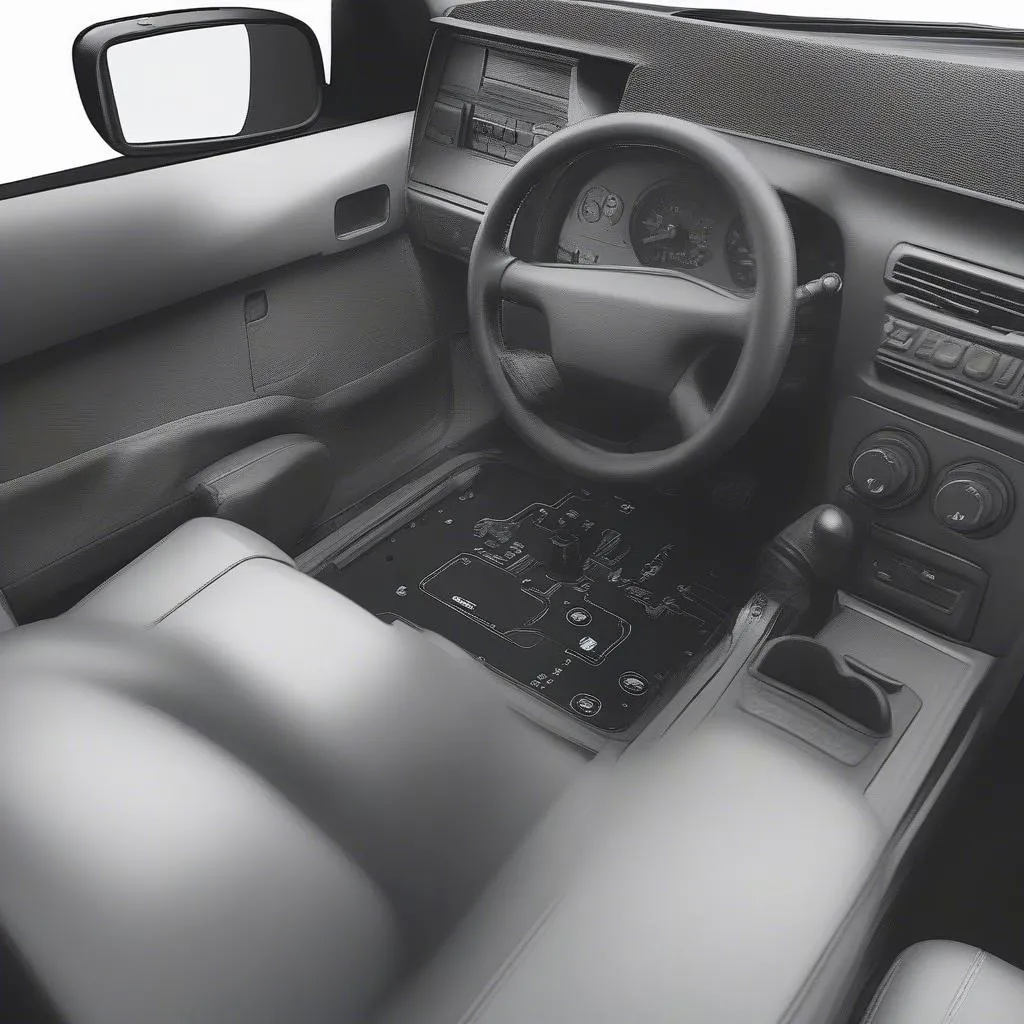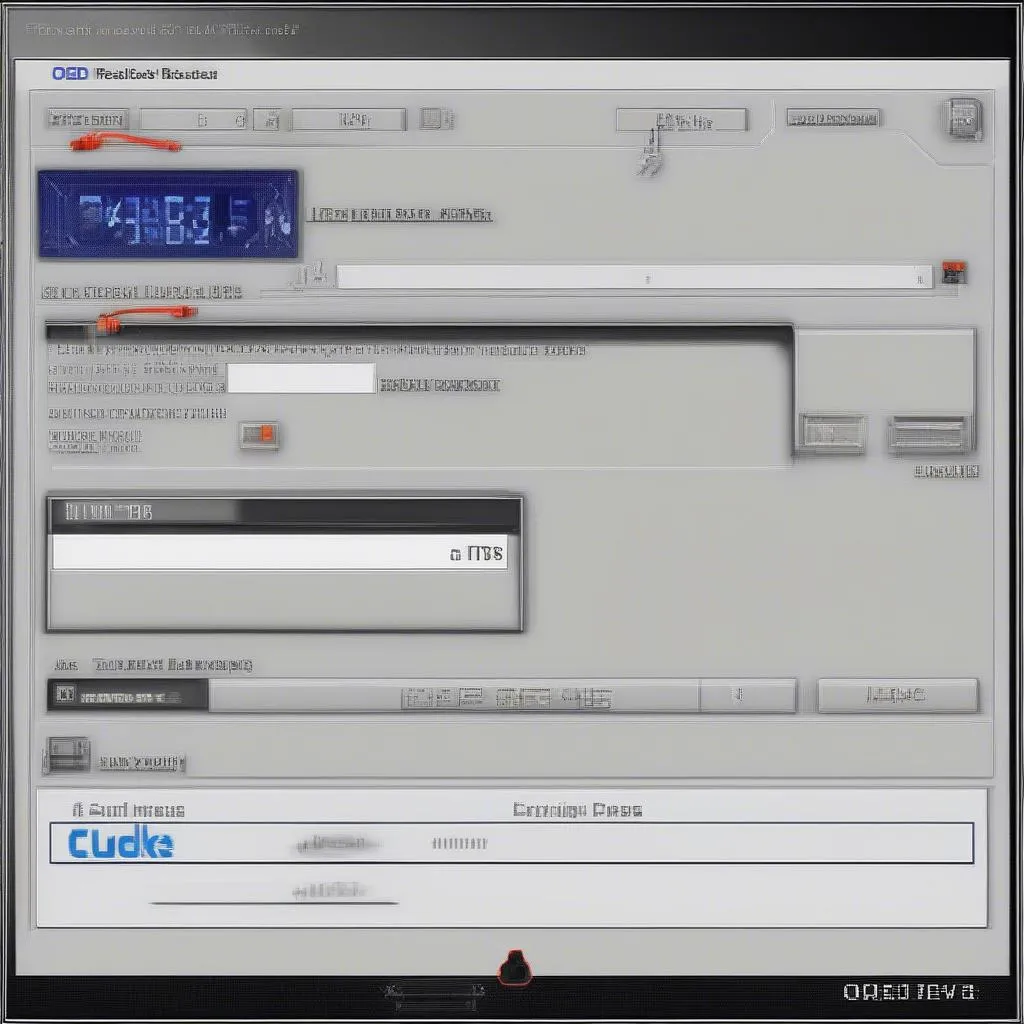You’re driving down the road, enjoying the open highway, when suddenly the check engine light flashes on your dashboard. Panic sets in! What does it mean? Why is your car acting up? You may be wondering, “How do I get rid of that annoying check engine light?” The answer lies in understanding the OBD2 system and how to clear the codes it stores.
What is the OBD2 System and Why is it Important?
The OBD2 (On-Board Diagnostics 2) system is a standardized diagnostic system found in all vehicles manufactured in the United States since 1996. It’s like a built-in computer that monitors your car’s engine and other critical systems for potential issues. Think of it as a tiny detective constantly checking for any problems.
The OBD2 system keeps a running log of any malfunctions it detects. It stores these issues as “codes,” a series of letters and numbers that indicate a specific problem. These codes are essential for mechanics to diagnose problems, but they can also be useful for car owners who want to understand what’s going on with their vehicle.
How to Clear the OBD2 Codes: Step-by-Step Guide
Clearing the OBD2 codes is a fairly simple process that can be done using a code reader or a scan tool. You can find these tools online or at most auto parts stores.
Here’s a step-by-step guide on how to clear the OBD2 codes:
- Locate the OBD2 port: This port is usually located under the dashboard, near the steering column. It’s a 16-pin connector with a trapezoidal shape.
 OBD2 Port Location Under Dashboard
OBD2 Port Location Under Dashboard - Connect the code reader: Plug the code reader into the OBD2 port.
 Connecting OBD2 Code Reader
Connecting OBD2 Code Reader - Turn the key to the “ON” position: You don’t need to start the engine, just turn the key to the “ON” position so the car’s electrical system is powered on.
- Read the codes: The code reader will display the codes stored in your car’s computer. Make sure to note down these codes for future reference.
- Clear the codes: Most code readers have a “clear codes” or “erase codes” function. Select this option and follow the instructions on the device.
- Turn the key to the “OFF” position: Once the codes are cleared, turn the key off.
Important Considerations:
- Clearing codes doesn’t fix the problem: While clearing the codes will turn off the check engine light, it doesn’t address the underlying issue that caused the code to be stored. It’s crucial to understand that simply erasing the codes will not fix the problem. It’s important to get your car diagnosed by a mechanic to find out the cause of the problem and have it fixed.
- Some codes can’t be cleared: There are certain codes that can’t be cleared using a code reader. These are usually related to safety systems or emissions controls, and they require a specialized tool or a visit to a mechanic. For example, a car manufacturer might not allow you to clear emissions-related codes.
- Timing is key: It’s generally a good idea to clear the codes when the check engine light comes on, especially if you’re experiencing noticeable problems with your car. However, clearing the codes prematurely might hinder your ability to diagnose the problem accurately later.
- Clearing the codes is not always necessary: If you’re not experiencing any noticeable problems with your car, clearing the codes might not be necessary. Many times, the check engine light can turn on due to minor glitches or temporary issues, and the problem might clear itself without any intervention.
Frequently Asked Questions:
- How often should I clear the OBD2 codes? It’s recommended to clear the codes whenever the check engine light comes on, but only after you have addressed the underlying problem. Clearing the codes before fixing the problem will not resolve the issue.
- What if the check engine light comes back on after clearing the codes? If the check engine light comes back on after clearing the codes, it means the problem hasn’t been resolved. You need to get your car diagnosed by a mechanic.
- Can I clear the OBD2 codes myself? Yes, clearing the OBD2 codes is a relatively simple process that can be done by most car owners. However, it’s important to understand that clearing the codes doesn’t fix the problem and that you should still get your car diagnosed by a mechanic.
- What are some common OBD2 codes? Common OBD2 codes include P0171 (System Too Lean), P0300 (Random/Multiple Cylinder Misfire Detected), and P0420 (Catalyst System Efficiency Below Threshold (Bank 1)).
What are some alternatives to clearing the OBD2 codes?
If you’re hesitant about clearing the OBD2 codes yourself, there are alternatives. You can take your car to a qualified mechanic to diagnose and fix the issue. This is the most reliable way to ensure your car is running smoothly and safely.
Conclusion
Clearing the OBD2 codes can be a useful tool for understanding what’s going on with your car, but it’s important to remember that it doesn’t solve the underlying problem. If the check engine light comes on, the best course of action is to get your car diagnosed by a mechanic and address the issue before clearing the codes.
We hope this guide has been helpful in providing you with a better understanding of the OBD2 system and how to clear the codes. If you have any questions or require further assistance with OBD2 tools or car diagnostics, please don’t hesitate to contact us. We have expert automotive technicians available 24/7 via WhatsApp: +84767531508.